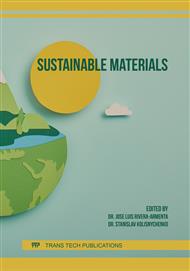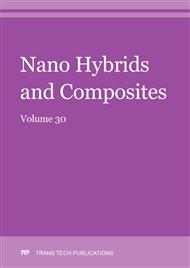p.9
p.19
p.27
p.41
p.55
p.63
p.73
p.79
p.87
Tensile and Flexural Properties of Untreated Sisal Fibers Reinforced Unsaturated Polyester Resin Composites
Abstract:
Biobased products have been widely used to prevent damage to the environment. In this context, the use of composites reinforced with natural fibers, replacing synthetics ones, has motivated several researches in last years. The objective of the present work was to characterize composites prepared with unsaturated polyester resin and untreated sisal fibers by tensile and flexural tests. The untreated sisal fibers reinforcement was investigated using 25 g and 50 g masses. The fibers were randomly arranged into the resin to mold composite boards, using the compression molding technique without heating, in a curing process at 25°C for 48 hours. The results indicated that composite with 50 g presented better tensile strength (49%), flexural strength (71%) and flexural modulus (137%). The increase of fibers content improved the mechanical behavior of the composite. In addition, the use of natural fibers replacing a portion of petroleum-based resin can increase the sustainable concept of the products and reduce manufacturing costs, because it can be used less resin.
Info:
Periodical:
Pages:
73-78
Citation:
Online since:
November 2020
Price:
Сopyright:
© 2020 Trans Tech Publications Ltd. All Rights Reserved
Share:
Citation:



